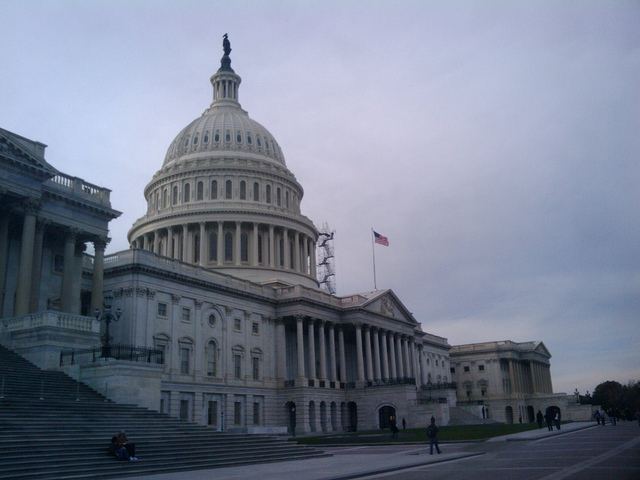
Republican Study Committee (RSC) Chairman Mark Walker (R-NC) and RSC Budget and Spending Task Force Chairman Tom McClintock (R-CA) released the RSC’s budget proposal this week. The budget, entitled “A Framework For Unified Conservatism,” enacts important policies like free market health care reform and responsible entitlement reform.
Most importantly, the budget calls for pro-growth tax reform and making middle class tax cuts permanent. Chairman Walker and Chairman McClintock should be commended for this conservative budget outline.
The RSC budget calls for making the individual tax cuts from the Tax Cuts and Jobs Act permanent. Under the TCJA, 90 percent of wage earners are seeing increased take-home pay. A family of four earning the median income of $73,000 will receive a tax cut of more than $2,000 this year. Similarly, a single parent with one child earning $41,000 per year will see tax reduction of 73 percent, resulting in a $1,304 tax cut.
Unfortunately, arcane Senate procedure and the refusal of Democrats to support tax cuts meant that the individual provisions in the Tax Cuts and Jobs Act could not be made permanent. If Congress does nothing, these important tax cuts will sunset in 2026.
The RSC budget would make these important provisions permanent:
- The doubling of the standard deduction to $12,000 and $24,000 for a family. This provision is a $690 billion tax cut between 2018 and 2025. If allowed to sunset, the standard deduction would revert to $6,000 for individuals or $12,000 for a family.
- The reduction of nearly every individual income tax bracket, a tax cut of $1.2 trillion between 2018 and 2025.
- The doubling of the child tax credit to $2,000 Child Tax Credit. This is a $533 billion tax cut between 2018 and 2025. If allowed to sunset, the CTC would revert to $1,000 per child.
- A 20% deduction for pass-through businesses (LLCs, partnerships, S-corporations etc.). This is an 88 billion tax cut between 2018 and 2025.
- The doubling of the death tax exemption to $11 million. This is a $69 billion tax cut between 2018 and 2025. If allowed to sunset, the exemption would revert back to $5.49 million, meaning more taxpayers, including many family owned businesses, would be hit by the death tax.
- An increase in the threshold that the Alternative Minimum Tax hits individuals so that it kicks in at $1 million of annual income. This is a tax cut of $572 billion between 2018 and 2025. If this sunsets, millions of families will be hit by the AMT.
The RSC budget also calls for making full business expensing permanent ensuring strong economic growth continues. Prior to passage of the TCJA, businesses were forced deduct, or “depreciate” the cost of any new investments and assets over multiple years depending on the asset they purchase, as dictated by arbitrary IRS rules. Tax reform implemented immediate, full business expensing for five years with a phase-out of the provision over the next five years.
Expensing allows businesses to immediately deduct the cost of new equipment, and so encourages businesses to make more investment in the U.S. economy. Full expensing gives businesses a zero percent rate on the cost of new investments, which incentivizes more capital flowing into the economy, leading to stronger growth.
According to research by the Tax Foundation, implementing permanent full business expensing increases GDP by five percent after a decade and increases wages by 4 percent, creating more than one million jobs.
Lastly, the RSC budget calls for entitlement reforms that ensure these programs grow at a sustainable rate. If entitlement spending is not reined in, these programs will continue to add hundreds of billions to the national debt each year. Without reform, the Social Security Trust Fund will be completely depleted by 2035 and the Medicare Trust Fund will be empty by 2029. Modernizing Social Security and Medicare are imperative in order to save the programs.
This RSC budget makes multiple changes to Social Security, starting with implementation of the Social Security Reform Act to achieve long-term sustainable solvency. Second, the plan gradually phases in an increase of the eligibility age to 70 to keep up with a rising mortality rate. Third, the framework modernizes the benefit formula for new retirees, provides additional support for the most vulnerable, reduces the barriers to staying active in retirement, and prohibits overpayment debt discharge.
The framework also implements needed reforms to Medicare. First, the plan reduces costs for beneficiaries by implementing premium support in 2023 while including traditional fee-for-service as an option. Second, the framework phases in an increase in the eligibility age to account for longer lifespans. The plan combines Parts A & B, reforms Medigap, and phases in increase premiums and means testing.
These reforms will place important programs on a sustainable path, ensuring they continue to serve those in need.

